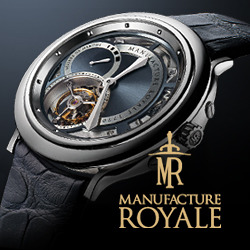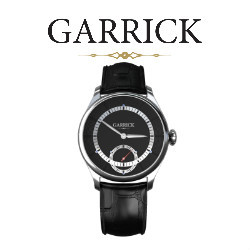Despite the near vertical growth in the sales of fine watches, the ownership of multiple timepieces remains the preserve of the collector. Surprisingly people few own the sartorial recommendation of a trio of timepieces: dress watch, day-to-day watch and sport watch. Two independent forces, however, have – for the best part of a half-century – bridged the gap between watch types.
Rolex’s Submariner and GMT have always managed to sneak past the doorman at even the most formal of events, somehow passing muster even with a dinner jacket. It’s been this way since the 1950s, when the big sport Rolexes first appeared. But even when fashioned from gold, they have always been the exception rather than the rule, oozing functionality rather than elegance.
Turn the clock ahead to the mid-1970s, though, and in rapid order Audemars Piguet and Patek Philippe launched, respectively, the Royal Oak and the Nautilus. Unabashedly sporting and oversized, and released initially in stainless steel, they soon appeared at the finest events, but like swimmers still in their trunks. The eventual acceptance of this pair of iconoclastic and – with hindsight – iconic watches has caused a complete reassessment of how we choose and wear fine watches. And it’s all but killed off the concept of the pure dress watch.
Thin, fragile but suave, the dress watch still has its place at the far end of the sartorial scale, along with black ties and wing collars. But with the “democratisation” of the upper reaches of society – and you can only call it that when you look at what (rather than who) makes the society pages these days – we now have one-style-fits-all timepieces. And the formula has moved on from the predominantly stainless steel macho of the Royal Oak and Nautilus.
Blame it on the bling, if you must, but gold is back big time, especially rose (or red or pink, depending on the vendor). Concurrently with the lust for rose gold, and possibly inspired by the Stealth fighter and all it did to make black ultra-cool, watchmakers have been marrying golds with black, especially rubber straps and carbon fibre details. More sinister, and for some more cool, are all-black watches, finished in the latest form of vapour depositing, so the black won’t wear off to expose the steel underneath.
Critical mass for all-black was reached with the mid-1990s PVD Panerais – now serious collectibles. That icon has returned to the range in the form of the left-Handed Panerai Luminor Marina Ref PAM00026 (£4,700), the most sinister version yet of a watch originally designed for underwater saboteurs. First and foremost a diving watch, it looks perfect peeking out from the sleeve of a sharp suit, especially at Black-and-White Balls.
More massive and just as Spinal Tap-ishly black is the Zenith Defy Xtreme Open SEA (£14,400). Rugged and immune to abuse, it requires a wide wrist to do it justice; only ladies can get away with oversized watches dangling loose over the hand. Containing one of the finest movements on the planet, the Open SEA is one to consider if you’re concerned with what’s inside the watch as well as outside.
If you want the look and the quality without a second mortgage, Hamilton’s Khaki XWind Chrono (£960) gives you the style, the size and the functions of the Zenith, as does Oris’ TT3 All Black Chronograph (£1,750). Both models takes stealthness to heart, offering undeniable style and prices you needn’t reveal.
For some, though, all-black is too funereal a look, too Steven Segal, too Goth rocker. In which case, a hint of gold breaks up any sugfgestion of monotony. Glycine’s Airman 7 Plaza Mayor in yellow gold (£14,000) is a per4fect example of a statement watch which balances the serious and the sexy: it’s a massive 53x53mm square – just big enough to hold three separate movements deal independently with three time zones
If the Glycine is perfect for the fashionable traveller, the stylish diver should consider the rose gold and black Blancpain Fifty Fathoms Tourbillon (£62,040). They’ve taken a masterpiece from 1953, revived it and added to it the ultimate complication, so you get underwater security and haute horlogerie in a single watch.
Staying with watches that boast movements to dazzle any enthusiast is Richard Mille’s RM007 in rose gold on a black rubber strap (from £20,000) suits both men and women, its absence of a traditional dial allowing you to savour the works inside. De Grisogono’s Instrumento Grande in rose gold and black (£13,900) offers ‘big date’ read-out in a classic square case; the legendary Cartier Santos 100 (£12,150) in rose gold on black rubber, the updating a watch launched over a century ago, is a perfect foil for the De Grisogono. Also exploiting the more formal appeal of square cases, is Dent’s Parliament (£12,700). It blatantly honours Big Ben. Then again, Dent company manufactured the world’s most famous clock 150 years ago. In rose gold, with a black dial, the Dent isn’t just a watch: it’s a time-telling Union Jack.
For those who prefer to stick with round cases, IWC’S St Exupery UTC (£9,750) is the latest in a series honouring the legendary pilot, and it will appeal to the busy traveller because it shows two times zones. IWC complement the reddish metal not with black but with brown: the dial is chocolate coloured while the strap is made from brown buffalo hide. If you prefer your contrast to err on the side of the gold rather than the black, the Omega Seamaster Planet Ocean Chronograph on a bracelet (£21,000) adds rose gold elegance to a watch that shares the DNA of the timepieces worn by NASA’s astronauts. Oh, and 007, too.
This round-up, though, must end with the watch that did more to popularise the gold/black marriage than any other, as a result becoming the hottest watch of the decade. Hublot’s Big Bang Chronograph (£14,400) almost single-handedly established the lust for the rose gold and black rubber combination, but the company is too clever to be a one-trick pony. They’ give you all-white, all rose-gold, all brown, and yes, all black – right down to the hands and numbers. But the red gold-and-black is the bangin’est Big Bang of them all. Expect to join a queue.
Stendhal would be so proud.
(After Hours, 2008)










